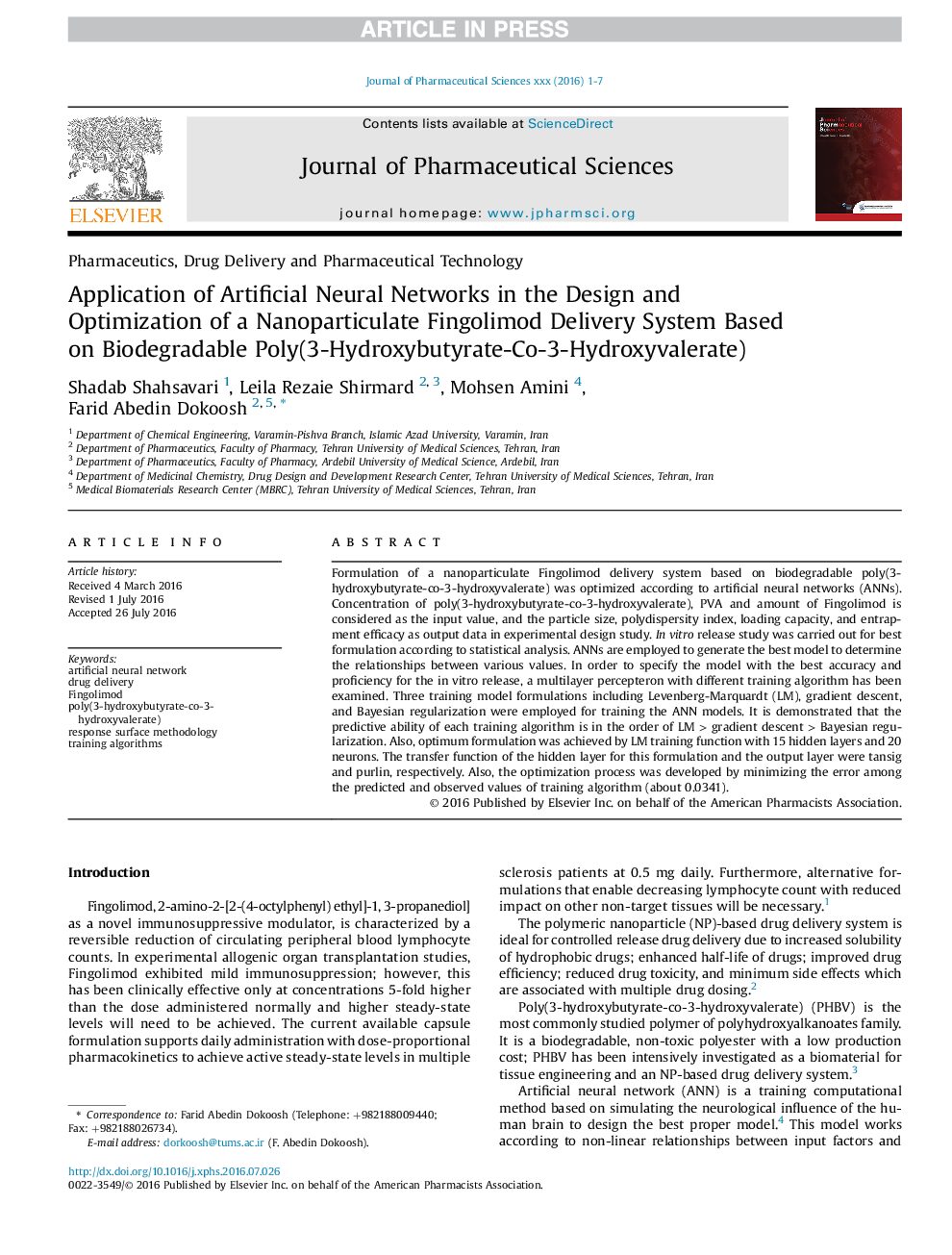| Article ID | Journal | Published Year | Pages | File Type |
|---|---|---|---|---|
| 8514591 | Journal of Pharmaceutical Sciences | 2017 | 7 Pages |
Abstract
Formulation of a nanoparticulate Fingolimod delivery system based on biodegradable poly(3-hydroxybutyrate-co-3-hydroxyvalerate) was optimized according to artificial neural networks (ANNs). Concentration of poly(3-hydroxybutyrate-co-3-hydroxyvalerate), PVA and amount of Fingolimod is considered as the input value, and the particle size, polydispersity index, loading capacity, and entrapment efficacy as output data in experimental design study. In vitro release study was carried out for best formulation according to statistical analysis. ANNs are employed to generate the best model to determine the relationships between various values. In order to specify the model with the best accuracy and proficiency for the in vitro release, a multilayer percepteron with different training algorithm has been examined. Three training model formulations including Levenberg-Marquardt (LM), gradient descent, and Bayesian regularization were employed for training the ANN models. It is demonstrated that the predictive ability of each training algorithm is in the order of LM > gradient descent > Bayesian regularization. Also, optimum formulation was achieved by LM training function with 15 hidden layers and 20 neurons. The transfer function of the hidden layer for this formulation and the output layer were tansig and purlin, respectively. Also, the optimization process was developed by minimizing the error among the predicted and observed values of training algorithm (about 0.0341).
Keywords
Related Topics
Health Sciences
Pharmacology, Toxicology and Pharmaceutical Science
Drug Discovery
Authors
Shadab Shahsavari, Leila Rezaie Shirmard, Mohsen Amini, Farid Abedin Dokoosh,
